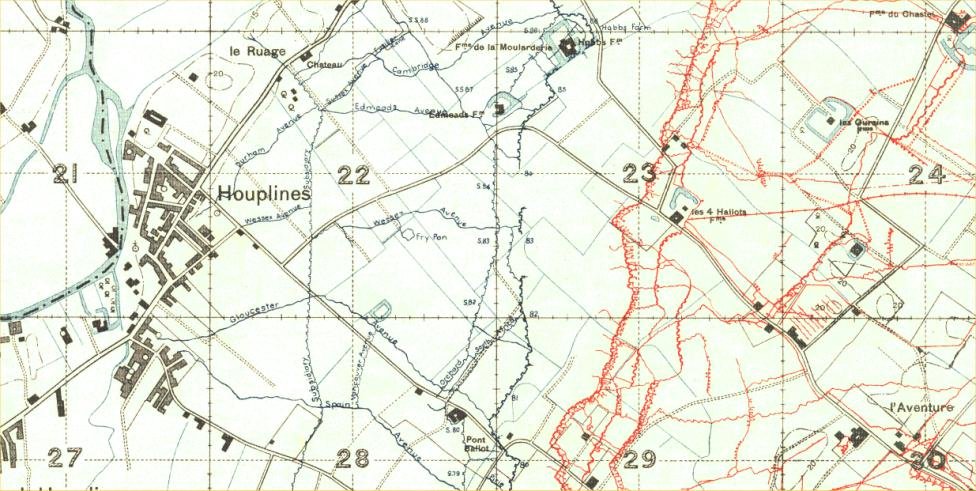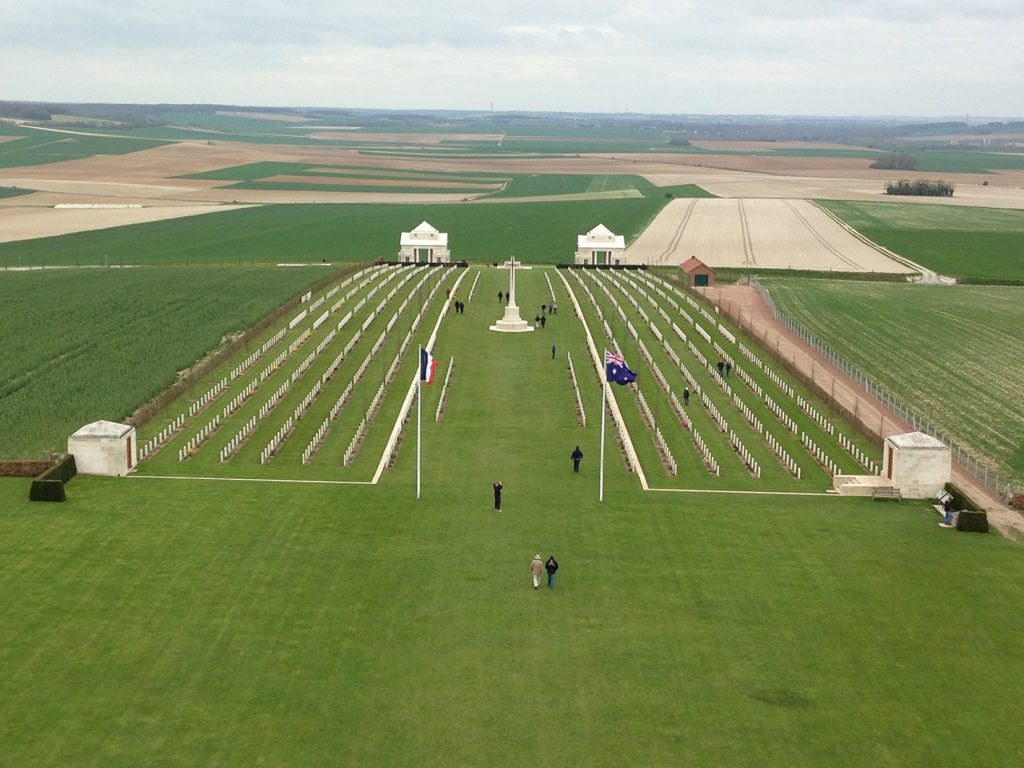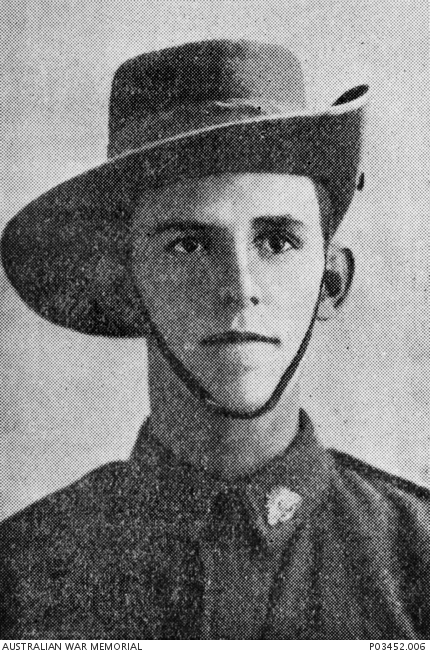Norman Harry Saunders was a very brave but also very unlucky young soldier. He was a member of that unfortunate generation who left school and walked almost immediately into the army and then set off for war. How blighted were their young lives by the events that overwhelmed society in the Great War? What enjoyment did they have in their youth almost all of which was spent at war?
Norman was from Roma, about 400 kilometres west of Toowoomba. His parents were Harry Hine and Jane Elizabeth Saunders of “Miome”, Roma. The family ran a pharmacy in the town. For his education Norman attended the Toowoomba Grammar School from which he graduated at the end of 1914. He travelled home for a time, settled his affairs, turned 18, and then travelled to Brisbane, where he enlisted on 20 July 1915. He was posted to the 31st Battalion, the Queensland unit of the new 5th Division that was being raised for service on the Western Front. He sailed from Melbourne on 9 November 1915 aboard A62 Wandilla.
Norman was a promising young soldier. He had several years’ experience as a cadet at school, rising to lieutenant in his senior year. He was 5’10” tall, weighed 133 pounds, had a dark complexion, brown eyes and black hair. He stated his faith as Church of England. His older brother Claude also enlisted, serving on Gallipoli and becoming a prisoner-of-war at Bullecourt in April 1917.
The 31st Battalion joined the other AIF infantry units in Egypt before deployment to France. Norman disembarked at Suez in early December. In February he spent a few days in hospital at Serapeum; in May he was promoted to corporal at Moascar and two weeks later sailed again, for Marseilles. The 5th Division was sent north of the Somme Valley to the area of Fleurbaix. In its first major attack, now known as the Battle of Fromelles, the division was sacrificed in a calamitous attempt to draw German reserves away from the Somme area. The attack failed in its objective; no ground was gained and 5530 men were lost. On 20 July Norman was wounded in action with injuries to his hand, leg and chest. Fortunately, the wounds were superficial; he was evacuated to hospital at Boulogne on the French coast and, after five weeks in a convalescent camp, he returned to his battalion.
The 31st was at Houplines in northern France when Norman marched in on 26 September 1916. Only a few weeks later the battalion prepared for a raid on the German lines. On 12 October five officers and 100 other ranks crept into No-Man’s-Land and assaulted the German trenches opposite. The raid was considered a success: 3 Germans were captured, others killed; a machine gun and some equipment were brought back. However, Norman was reported missing when the men regained their positions. The battalion diary gives few details but it seems that his body was seen later; on 20 October he was reported killed in action. However, his grave was not found after the war so that his name was placed on the Villers-Bretonneux Memorial.
The reader can imagine the harrowing impact of Norman’s death on his family; he was 19. His parents might gain some small comfort from receiving his possessions, however, even this was to be denied them. Nothing he carried with him was recovered and his kit could not be located. The pro-forma letters from Base Records assured them that these things would arrive in due course from France. In June 1918, almost two years after Norman’s death, his father wrote to the army with some frustration,
Some 3 or 4 months ago I wrote you in reference to my son’s effects . . . . If there is no possibility of my receiving his effects kindly advise me to that effect at the same time. I consider it very unjust that your dept is so lax in these matters. Yours faithfully, Harry Saunders.
The Saunders received Norman’s medals and mementoes in the years 1922 to 1923. Claude returned to the family in 1918, severely wounded and freed by the Germans for discharge.
Toowoomba Grammar School Archive Records state that he started at the school on 31st January 1912 and left on 1st June 1915. His achievements were recorded:
– Sports & Activities –
1915 – Cricket, 1st XI
1914 – Rugby, 1st XV
1915 – Rugby, 1st XV
– Leadership –
1915 – School Prefects, School Prefect
The School Magazine dated November 1917, stated, ‘Norman H. Saunders was just as we went to press, reported killed in France. He was a prefect here only last year and a member of the XV. He will be remembered, too, as corner man in the minstrel concerts, and in this, as in all other things, he always showed the keenest public spirit. His father, Mr. H. H. Saunders, of Roma, is also an old boy, and so is his brother Claude who served in Gallipoli, and is now in France.’
External Links:
Australian National Archives Military Records
AWM4 AIF unit war diaries 23/48/15 31 BN OCT1916
Australian War Memorial Honour Roll


1st XV Rugby Team 1911, Toowoomba Grammar School

Houplines frontline in 1917

Houplines frontline in February 1916

Villers Bretonneux Memorial looking west taken by Ann Hallam




